

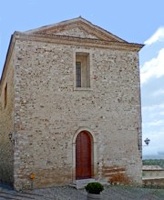
This church was first documented in 1219, and it became the most important church in Montefalco. The bishop of Spoleto merged it with a number of other churches in the surrounding countryside in the period 1222-36, in order to encourage the population to concentrate within the walls of town. In the late 14th century, San Bartolomeo acquired all of the privileges of the former parish church of San Fortunato.
In 1599, San Bartolomeo was raised to the rank of collegiate church with 12 canons and became responsible for the other parish churches of:
-
✴Santa Maria di Turri;
-
✴San Giovanni di Colle Mora; and
-
✴San Lorenzo (later Santa Maria delle Grazie).
San Bartolomeo was restored and enlarged in 1638-46. It acquired the church of Sant’ Illuminata when the Augustinian community there was suppressed in 1653, and Bishop Pietro Carlo Benedetti of Spoleto re-consecrated it in 1728.
Exterior
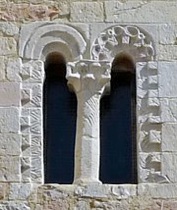
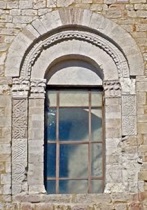
The apse of the original church survived this restoration. Other elements from the original structure are embedded in the fabric at the rear, including these two Romanesque windows.
Interior
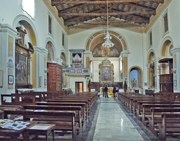
Madonna and Child (15th century)
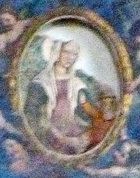
SS Bartholomew and John the Evangelist (17th century)
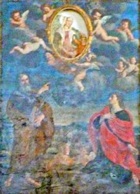
Consigning of the Keys (1663)
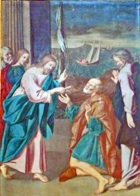
Works from the Church
Latin Inscription (late 1st century BC)
This (now lost) fragmentary inscription (AE 1965, 279a) was discovered in 1958 on a stone that was embedded near the font: the reverse side had been carved in the Middle Ages with the Lamb of God. The fragmentary inscription reads:
[.... IIIIVIR(o) Q(uin)]Q[uennali] VIVIR (o) SACIR(is) [FAC(iundis) ......]
[...qu]AEST(ori) MARONI I[....]
[...] MVNICIP(es) ET INC(olae) [...]
It commemorates a person whose name was on the fragment that is missing from the top of the stone. The rest of the inscription records:
-
✴his tenure in two positions in a municipal magistracy, presumably that of Mevania (Bevagna):
-
•quattuorvir quinquennial; and
-
•quaestor;
-
✴his role as a sevir sacris faciundis, a member of the college of six priests that is known (from other inscriptions) to have existed in Mevania; and
-
✴his position as a ‘marone’.
This is, in fact, the latest-known reference to the position of ‘marone’, which became obsolete in civic government after municipalisation in 90 BC. It is possible that the name was used for a religious office thereafter and, in particular, in this example.
The third line presumably referred to the inhabitants of Mevania, including foreign residents (incolae). It is likely that:
-
✴they had dedicated something to the illustrious man named in the dedication; or
-
✴he had undertaken a public commission for their benefit.
Funerary altar (1st century AD)
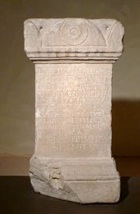
The inscription dedicates it to the Manes Gods, or gods of the underworld. Titus Aelius Primitivus dedicated it to his son, Titus Aelius Hospes, who was born in Mevania (Bevagna) and died when only 12 years old. The name “Primitivus” suggests that the father was a freedman, and hence the first of a new family line.

